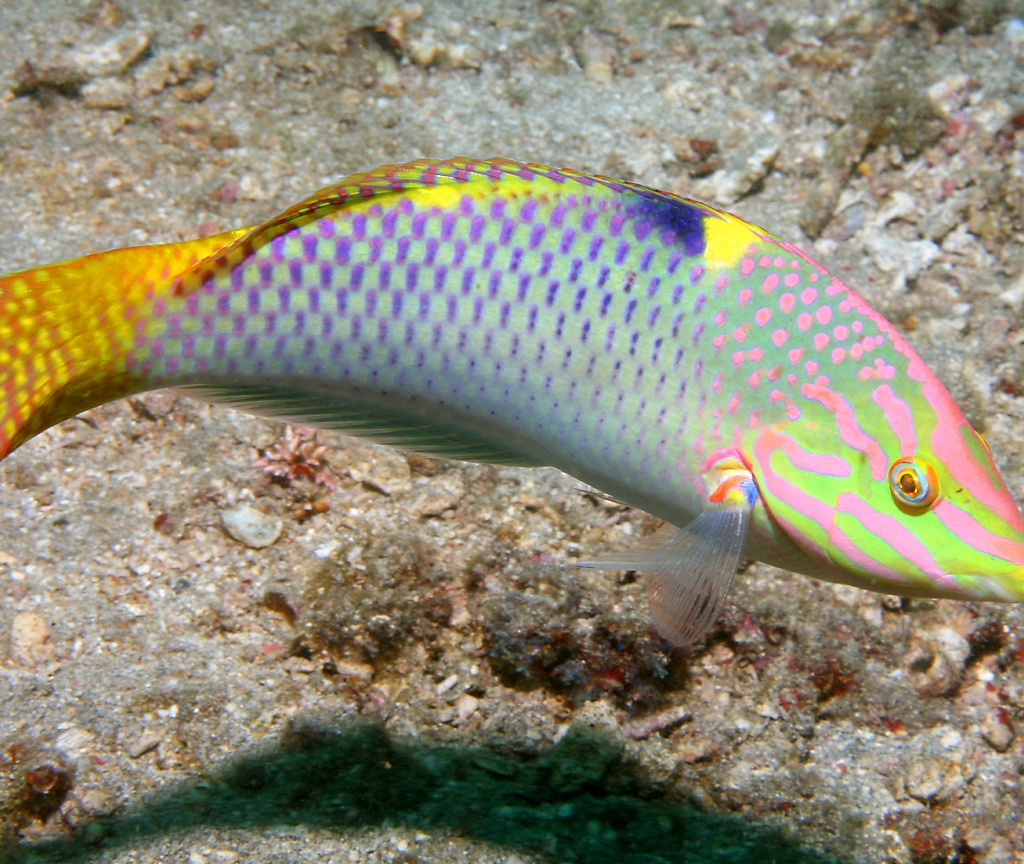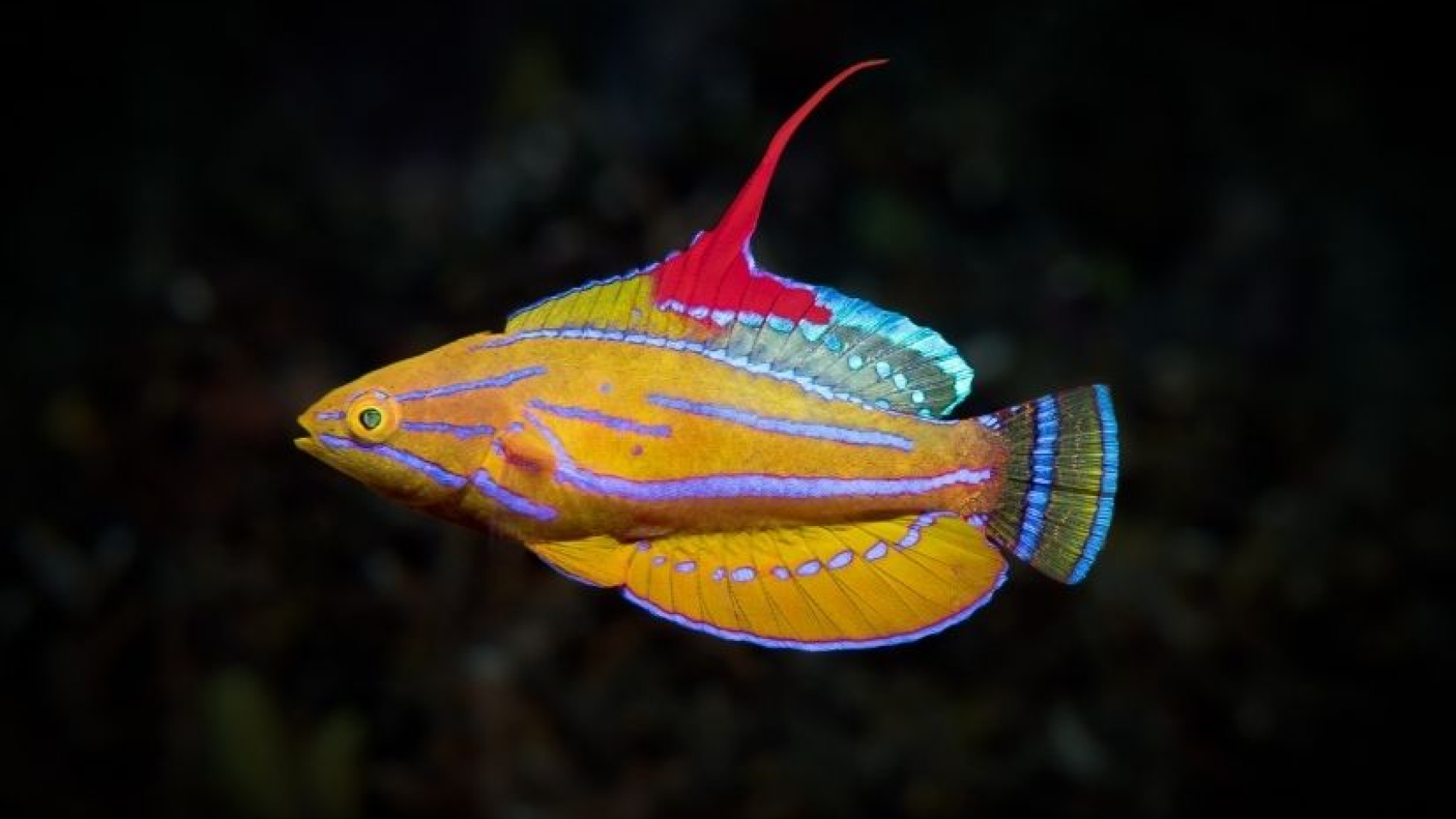There are ten(ish) genera of wrasses which are considered to be reef safe and are commonly available in the trade. They are: Anampses, Cirrhilabrus, Halichoeres, Labroides, Macropharyngodon, Paracheilinus, Pseudocheilinus, Pseudocheilinops, Pseudojuloides, and Wetmorella.
Some of these wrasses are considered completely reef safe, while others might be considered partially reef safe or not reef safe at all. Since there are so many species of wrasse available in the marine aquarium hobby, setting a generalization for care is not possible. There are however key requirements that encompass all.
3 Major requirements for keeping wrasses:
There are three key requirements for keeping wrasses which cannot be stressed enough.
1. Must be kept with appropriate tank mates. Basically, no aggressive fish. You need to have a relatively peaceful tank in order for it to be suitable for reef safe wrasses.
2. They need to be fed several times per day. If the thought of supplying small amounts of food (nutrients) to your tank several times per day makes you cringe, look elsewhere. Wrasses are very active fish with a short digestive tract, and need a variety of meaty foods often in their diet to keep them healthy.
Wrasses should be fed small amounts of meaty foods at least 3-4 times per day. Offer a variety of foods. Feed a frozen meaty food at least twice per day and pellets or the like for another feeding each day. Keeping your wrasses well-fed is twofold; not only do they stay fat and healthy, but they are less apt to go after your motile inverts.
3. Must be kept IN A COMPLETELY COVERED TANK. This is fundamentally essential. All wrasses are jumpers. They are a deep water fish and are not instinctively used to the surface being so near to them. Keep them in an uncovered tank, or one with any gaps, and it is simply a matter of time before they go carpet surfing. On that note, a wrasse with a 5/8” head will fit though a 1/2” hole. Don’t leave any opportunities for escape. If the head fits, the fish fits!

Some genera sleep or seek refuge in the sand. These genera require a sand bed in the tank of at least 1” in depth. Also, the sand does not need to be sugar-fine, but should not be as coarse as crushed coral – this can lead to abrasions and bacterial infections for the sand-sleepers. Sand 2-4mm in grain size is suitable. Only these genera require sand; other genera sleep in a mucus cocoon in the rockwork or crevices: Anampses, Halichoeres, Macropharyngodon, and Pseudojuloides.
You need to check the individual requirements of each species before you determine if a specific one is good for you. They all have their own requirements. Notably, please make sure you house them in an appropriate sized tanks.

Always, always use an acclimation box! When adding new wrasses to a system already containing established wrasses, an acclimation box is a must. Place the new arrival(s) in the box for 2-3 days before releasing. During this time, observe the interaction between the new arrival(s) and the established tank mates. If aggressive behavior is witnessed and does not subside, you should rethink the release of the new addition(s).
You may want to extend the acclimation period (say 4-5 days) and observe if the behavior subsides or changes. Generally, the acclimation box gives everyone enough time to “size each other up”, and much potential aggression is avoided as the hierarchy becomes established through visual interaction.

Please give a newly added wrasse time to adjust to their new system, up to a week or two. DO NOT go disturbing your tank looking for them; this will only add stress and hurt your chances of success. This especially applies to the sand burrowing genera; do not dig them up!

